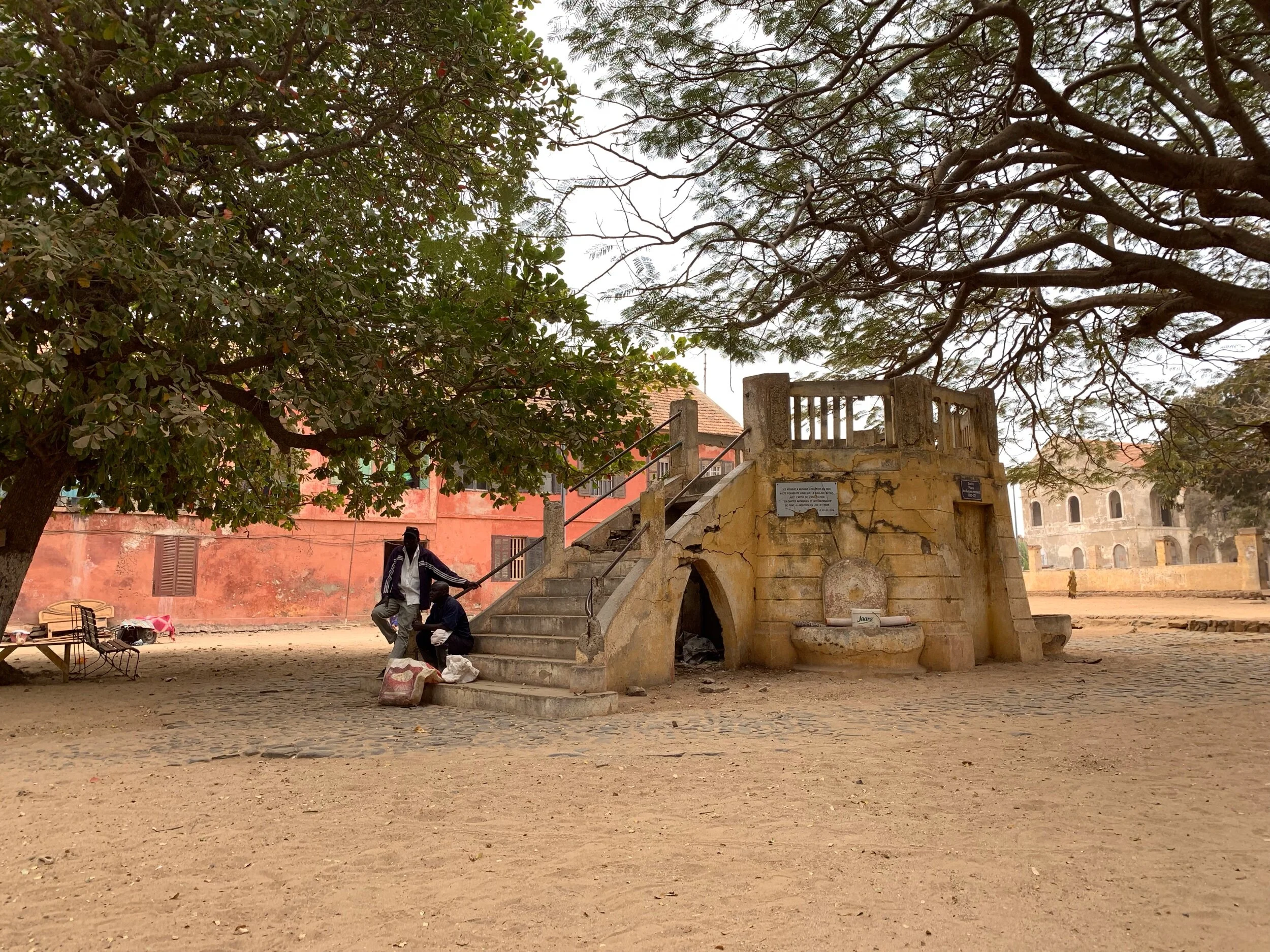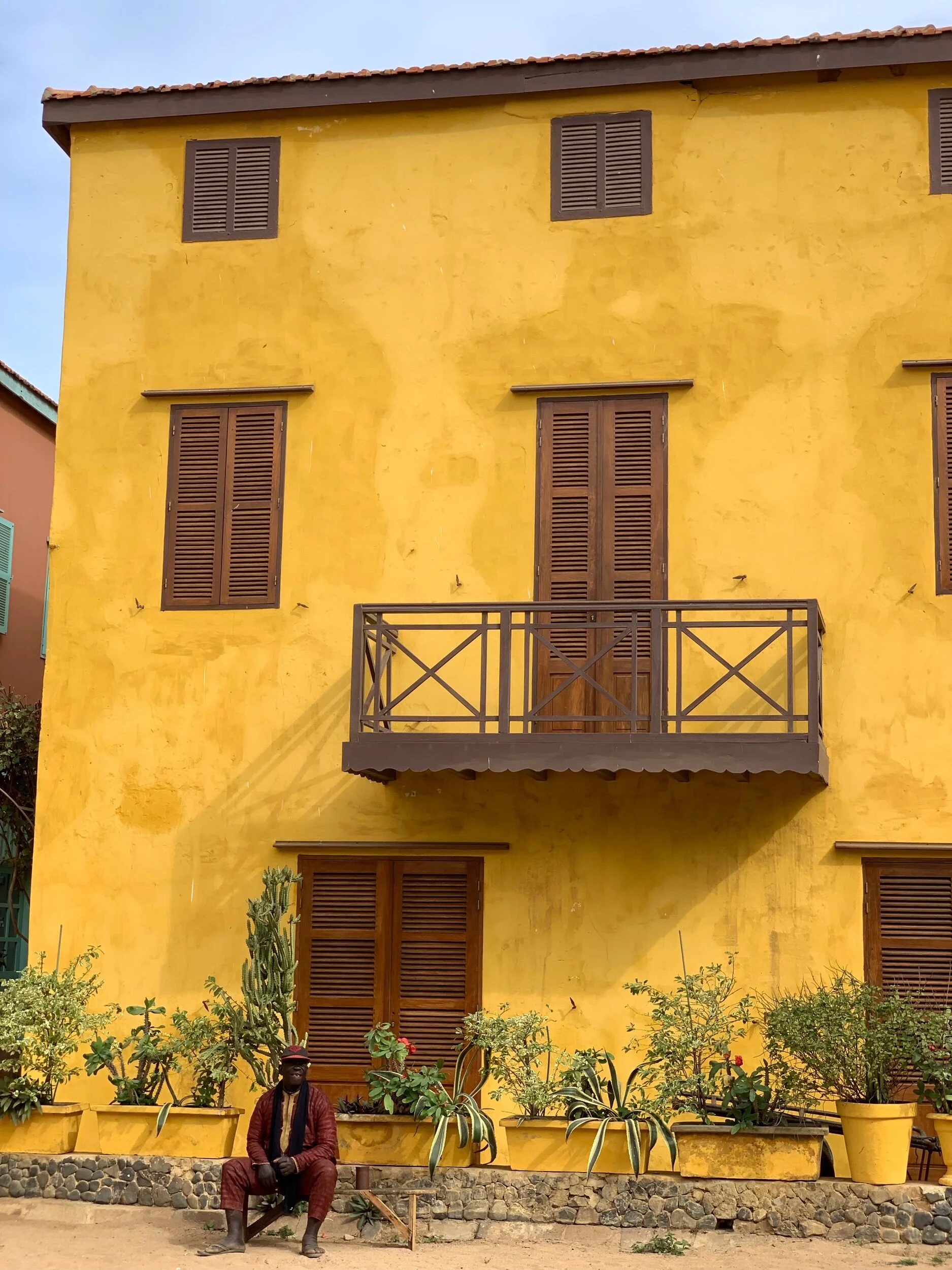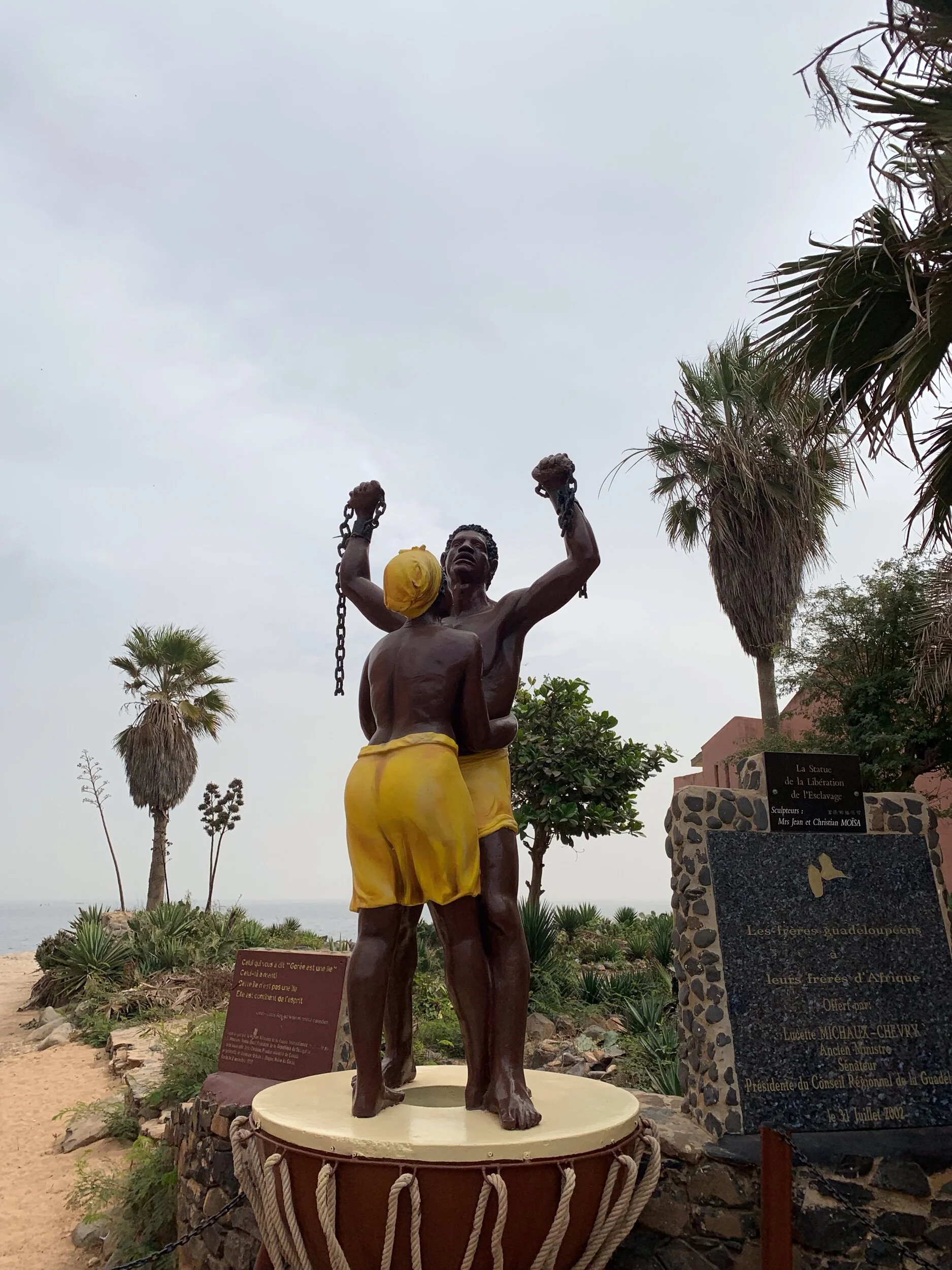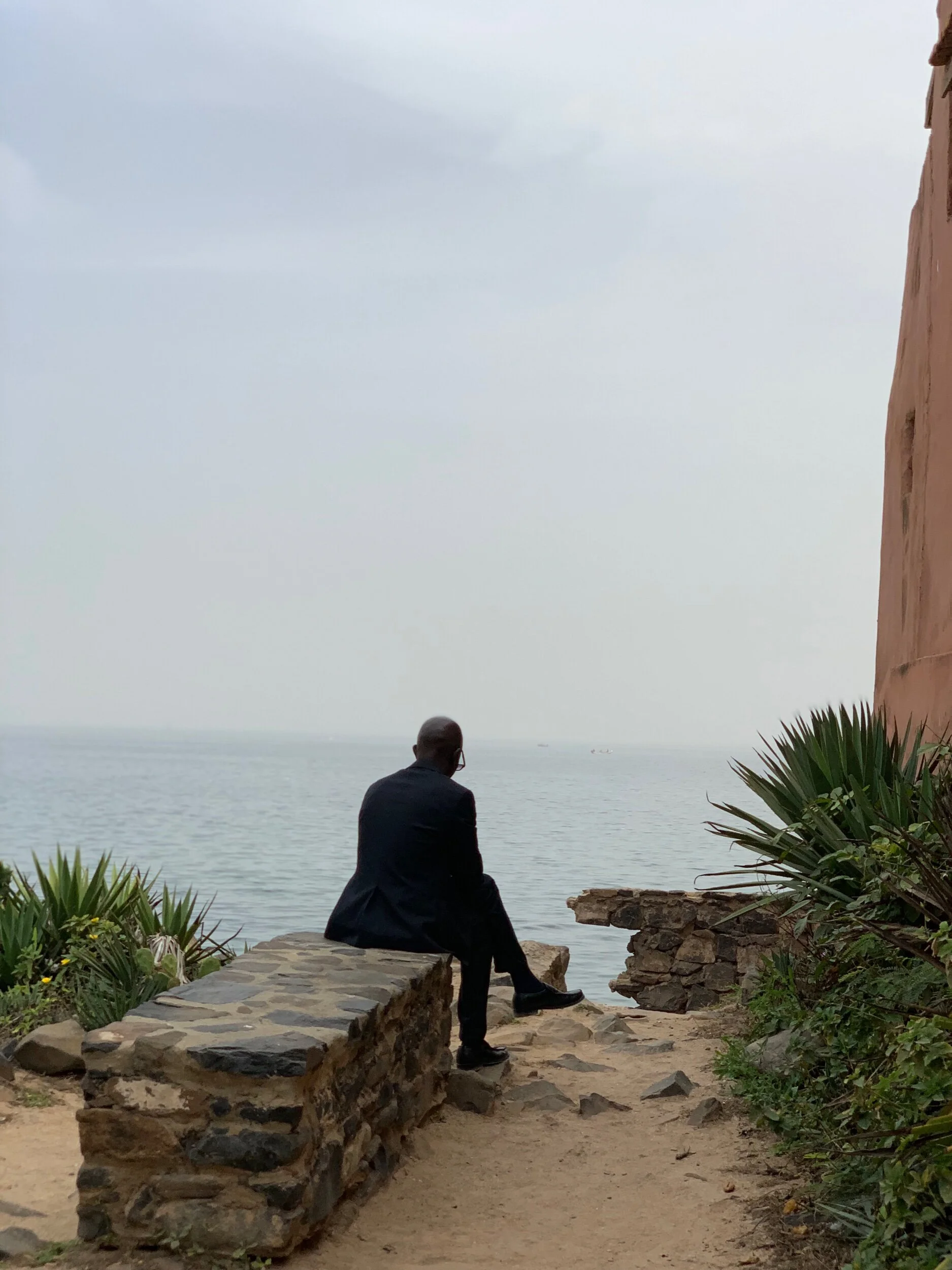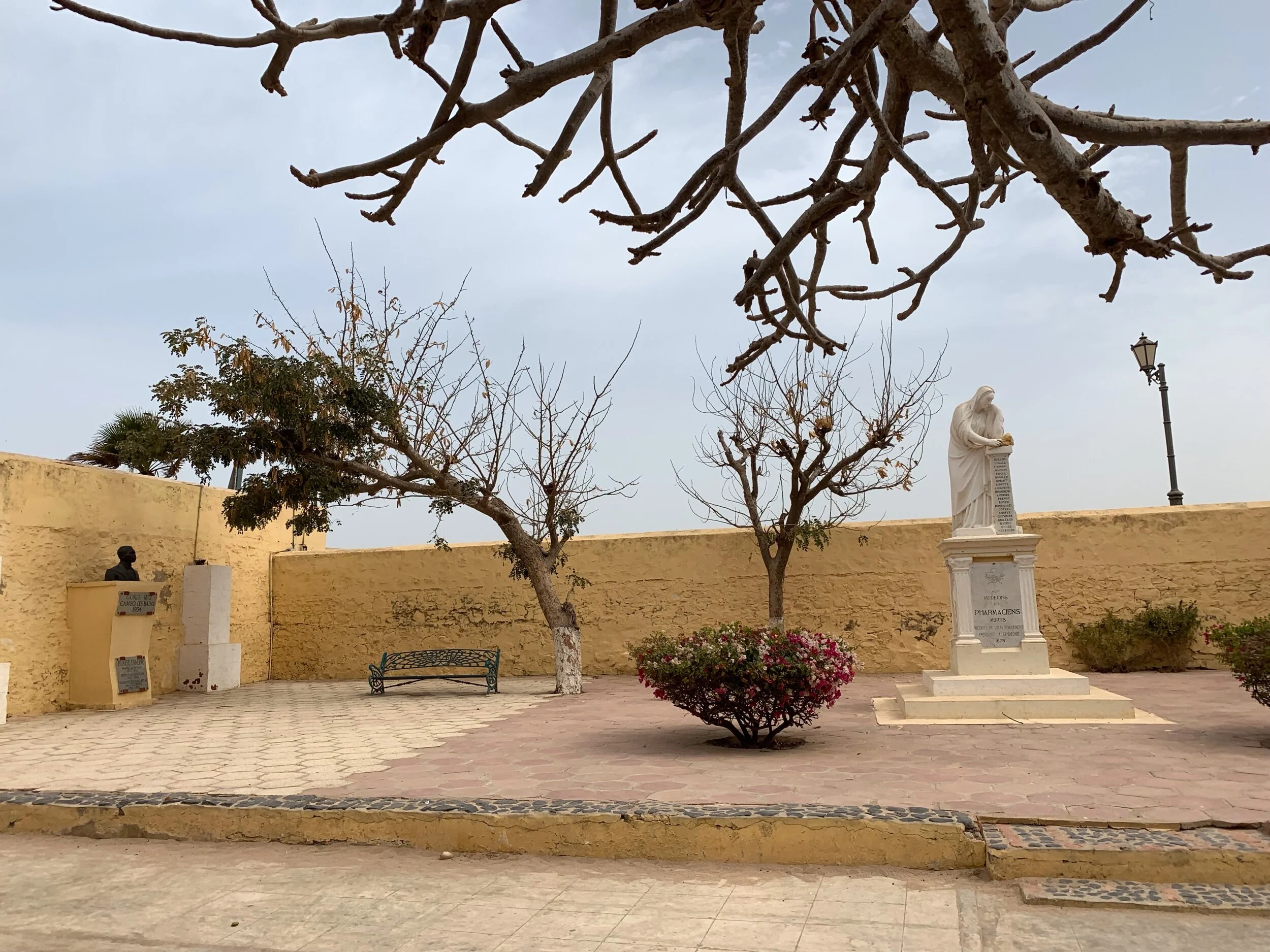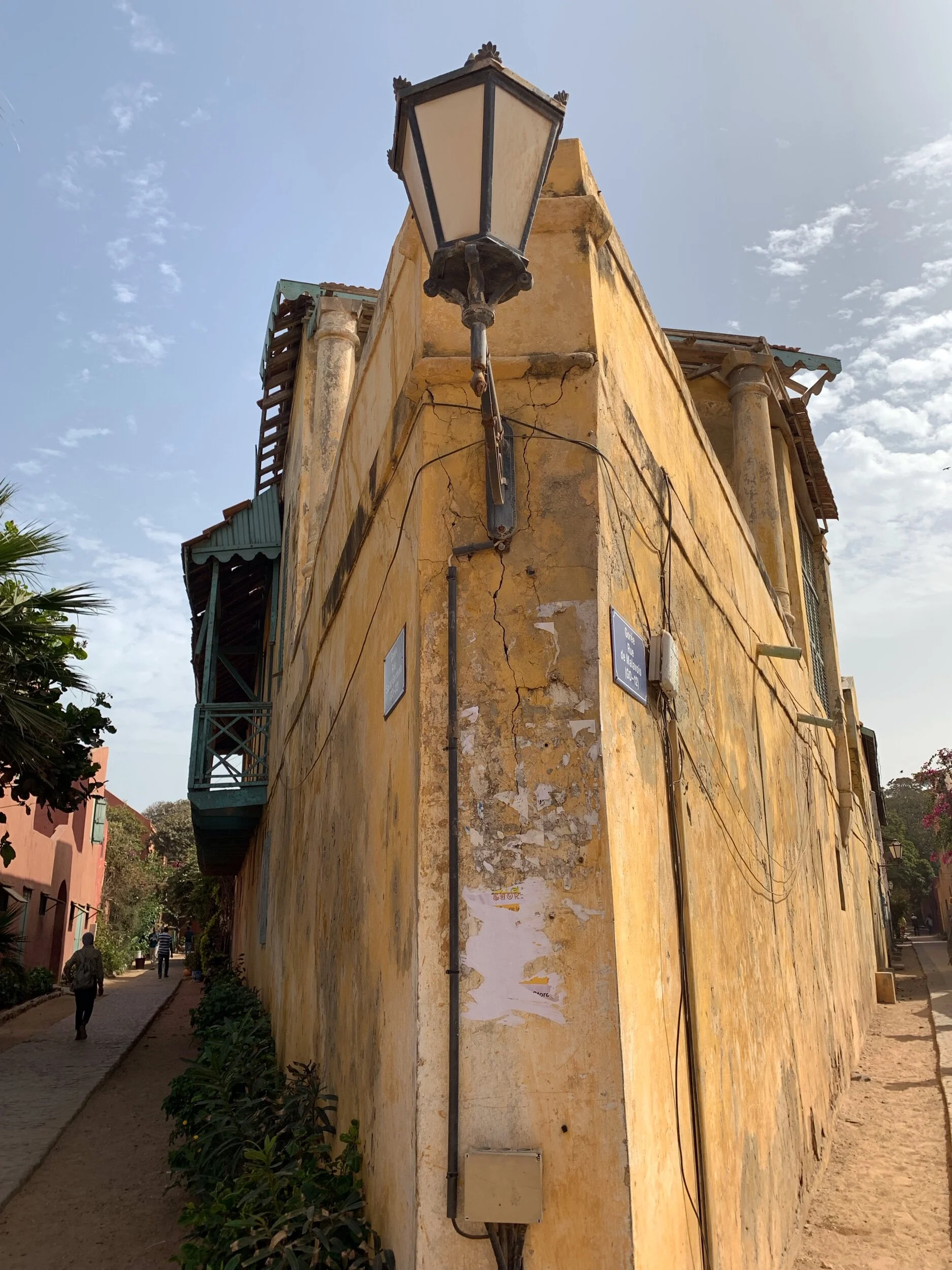On the way to Gorée Island, the ferry was filled with white tourists on the way to the island. Upon arrival, there were families on the beach. Tour guide explained that this place is a pilgramge site for members of the diaspora.Who were these tourists ? Why were there going to Goree ? Was it pure tourism ? Were they really to discover the history ?
There were many people on the island selling various items. They were located on the interior of the island and along the perimeter (closer to the docks). Did these sellers live on the island ? Is there any other diversity to the economy on the island ?
The history that was shared with the group by the tour guide underscored that Gorée Island is a colonial space. Even with function as a colonial space, there is a present community that exists. There was a man leaning against the structure of where slaves used to be sold. In fact, one of the top schools in the Senegal is located on Gorée Island and it functions as a boarding school.
Tour guide of the Maison d’Esclaves said that the reason that African Americans are good athletes is because the slaves that exited the “Door of No Return” were “the best of the best.” Was this reading of history true ? Why as a historian, add this commentary to the tour ? How many times and to how many groups of people has the tour guide shared this information with ?
At a statue donated by Brazil, our professor remarked that the drum of the statue represents the continuum of culture, history, and tradition between the African Continent and the diaspora.
In connection to my experiences in Senegal, I do know that there are catholic churches in the different communities that I have visited in Senegal. One of particular interests is the Catholic Church that I got a chance to visit on Gorée Island. This church has a pilgrimage banner that instilled a hierarchy between the depiction of white Jesus over black African faces. There were rays of light beaming around the figure of this White Jesus and this figure was looking down over these African individuals. This banner was quite large and expansive, as it took up almost half of the church’s exterior. In addition, this was a clear advertisement to encourage individuals to attend the upcoming pilgrimage. When I asked Jean Louis, who is a devout Catholic about this pilgrimage, he says that a lot of Senegalese Catholics attend this pilgrimage every year. Even on a small island such as Gorée Island, this church stood out amongst all of these colorful buildings for which Portuguese settlers had imported. In terms of positionality, the church loomed over the surrounding buildings with its European pillars and its coating of white created a connotation of purity amongst such “color.” What messages does architecture send to the people of Gorée Island ? Have they become engrained in the conscious and subconscious of the Senegalese people ?
Overall, religion has a way of occupying space that can be masked in a purity that allows for to romanticize its proliferation as in the case of both. Although given historical account can remain objective without injecting emotionality, there is a marginalization is evident in the lack of explicitly sharing the narratives of the trauma that religion has played in these Senegalese communities.
